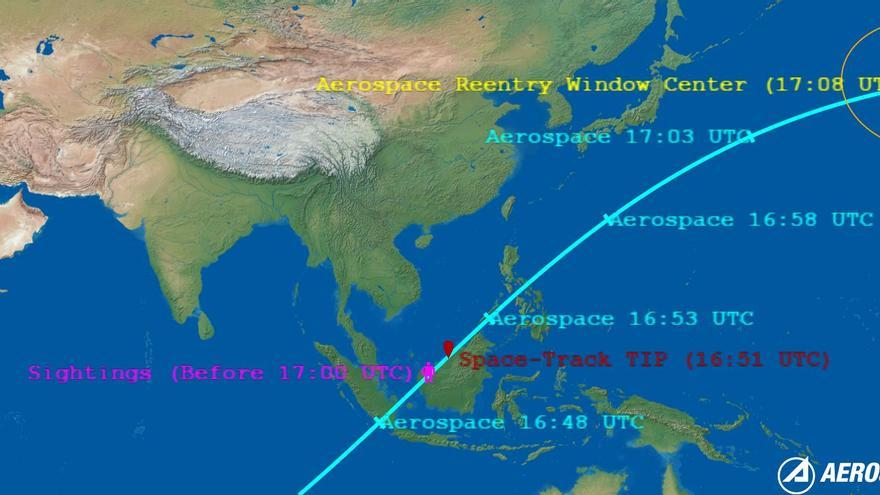That location is over the open sea, off the coast of the island of Palawan, which is part of the Philippines, highlights Space. This island is about 5,000 kilometers from the Maldives archipelago, where other calculations have estimated the impact.
Experts consider that it will take some time before it is known with certainty where the remains of the rocket have fallen, not ruling out that the fall of fragments has caused some injuries or damage to the infrastructure of the Malaysian cities of Sibu or Bintulu, and including in the State of Brunei.
–
part of a giant
The crashed object is the remains of the Long March 5B rocket booster, which was launched on July 24 to orbit the second module of China’s Tiangong space station, currently under construction.
The core stages of most orbital-class rockets are designed to descend shortly after liftoff, and are directed safely out to sea or over sparsely populated sections of land, or for powered vertical landings and reuse.
However, in the case of the Long March, after the giant rocket reaches space, it sheds a pretty big part of itself: its booster core. This booster remains in orbit, circling the planet before falling back to Earth.
Once it’s in orbit, the rocket’s booster motors can’t be re-ignited and it plummets uncontrollably back to Earth, confident that it won’t do any harm.
This disposal strategy is unwise, critics say, since the large rocket does not burn up completely upon re-entering Earth’s atmosphere.
lack of transparency
NASA administrator, Bill Nelsonexpressed similar sentiments, calling China in a communiqué issued shortly after the rocket’s re-entry.
“The People’s Republic of China (PRC) did not share specific information about the trajectory when its Long March 5B rocket fell to Earth,” Nelson said.
“All spacefaring nations must follow established best practices and do their part to share this type of information in advance to enable reliable predictions of potential debris impact risk, especially for heavy vehicles, such as Long March 5B, which carry a significant risk of loss of life and property,” he added. “Doing so is critical to the responsible use of space and to ensuring the safety of people here on Earth,” she concludes.
royal risk
The possibility of rocket parts falling into a populated area is real: It happened in May 2020, when fragments from another Chinese Long March 5B landed in Côte d’Ivoire, damaging several buildings in that West African nation, though no injuries.
In April last year, Long March-5B was launched by China for the purpose of placing a first phase of its space station into orbit. The remains of this rocket finally entered the atmosphere on May 9, also over the Indian Ocean, without major consequences.
The overall risk to people and property on the ground is fairly low, given that 75% of the Earth’s surface in the debris’ potential path is water, desert or jungle, aerospace analyst Ted Muelhaupt told a news conference. press, quoted by Reuters.
For any person, there is a six-in-10-trillion chance that a part of this rocket will hit them and cause some sort of casualty or injury, according to the Aerospace Corporation.
–


